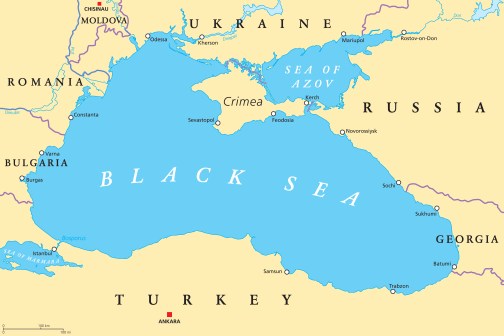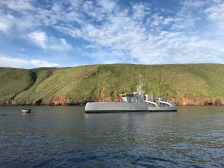‘Klingon bird of prey’ – New U.S. robot warship launched

https://www.youtube.com/watch?v=IsDivRmGIVI
The “Sea Hunter,” a 130-foot trimaran that Deputy Defense Secretary Bob Work compared to a “Klingon bird of prey” at its christening ceremony Sunday, has one big advantage over its predecessors — it doesn’t need a crew.
The “completely robotic” vessel, designed under the Defense Advanced Research Projects Agency’s submarine-hunting program, can travel 10,000 nautical miles at a speed of 12 knots without human intervention. Sea trials have proven that the ship’s autonomy suite can safely navigate through all-weather environments while complying with maritime anti-collision laws.
“Advances in autonomy and in artificial intelligence and autonomous control systems and advanced computing and big data, and learning machines and intuitive graphic visualization tools, metamaterials, miniaturization — they’re leading us to a time of great human-machine collaboration,” Work said at the ceremony, which was held in Portland, OR.
The ship will remain under DARPA custodianship as it undergoes further sea trials and experiments, but may be transferred to the Navy as early as 2018, according to DARPA Director Arati Prabhakar.
“Where we are today is just at the beginning of starting … experiments [with the warship],” she said. “For the next two years we’re going to be working really closely with the Navy to figure out, ‘what are those first few missions?’ And, ‘how do you really make it work?’ ”
Prabhakar noted that “Sea Hunter” has a projected daily operating cost of $15,000 to $20,000, a fraction of the $700,000 required to man a destroyer for the same amount of time. Its $23 million unit cost is also a vast departure from that of modern warships: the Navy’s new Zumwalt-class destroyer is produced at a cost of between $3 billion and $4 billion per unit.
“Sea Hunter” also has the advantage of customization, Work added.
“You can imagine anti-submarine warfare pickets, you can imagine anti-submarine warfare wolf packs, you can imagine mine warfare flotillas, you can imaging distributed anti-surface warfare action groups… and you might be able to put a six-pack or a four-pack of missiles on it,” he said. “Now imagine 50 of these warships… operating together under the hands of a flotilla commander. This is really something.”
“Sea Hunter,” Work said, is the first step in a journey to make the U.S. Navy “a Navy unlike any Navy in history, [with] a human-machine collaborative battle fleet that will confound our enemies.”






